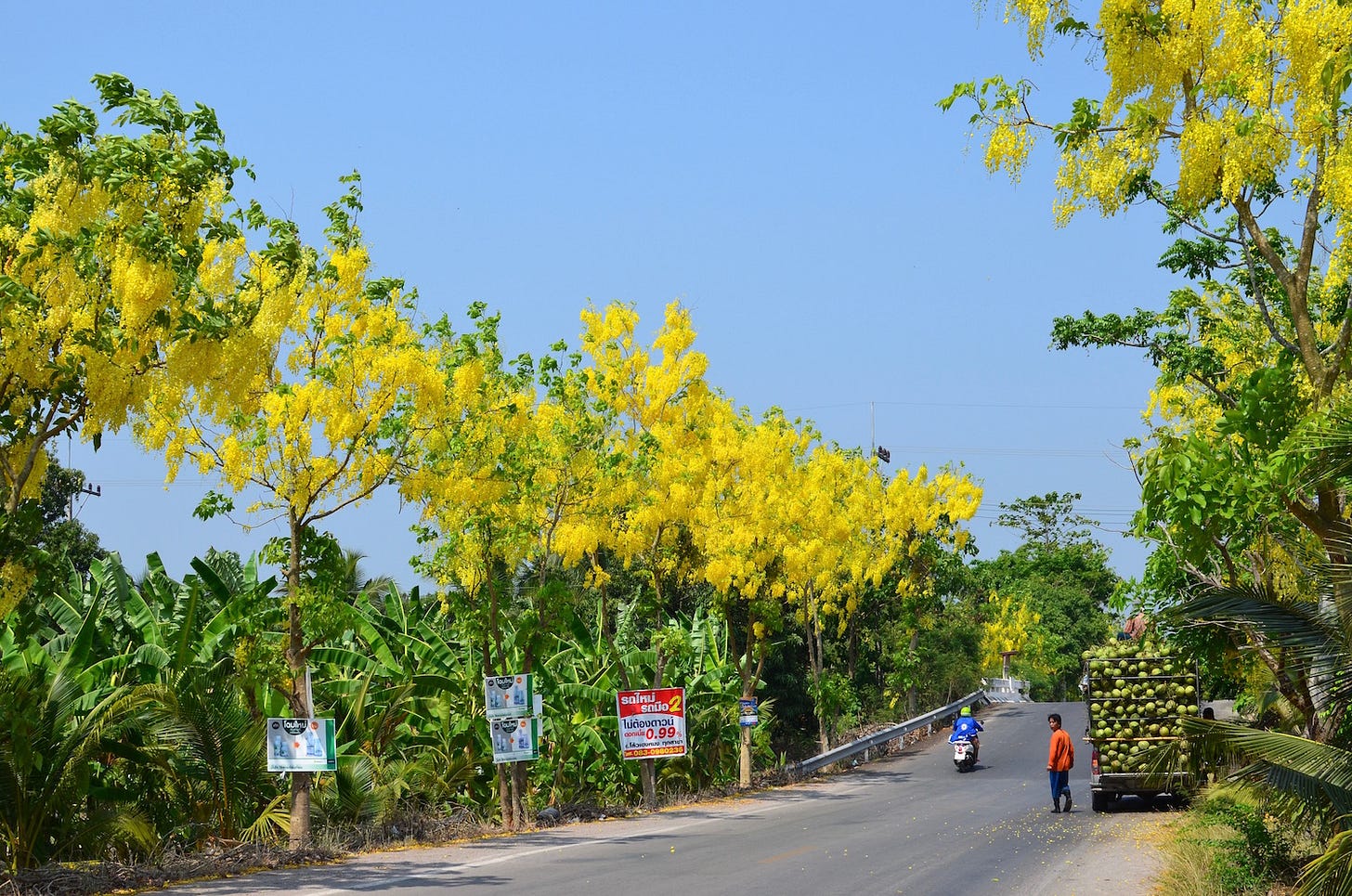T.I.C.D.: Samut coasts (Part I: Samut Songkhram & Samut Sakhon)
Part one of the Samut coasts, condensed.
Welcome back to the Thai Island & Coastal Directory, a book-in-progress that promises to be the most complete guide to coastal Thailand ever written in English, covering more than 800 islands. For info on how to use the T.I.C.D. and a working Table of Contents, paddle over here. Thank you for reading!
T.I.C.D. ticker: So far, we’ve covered 351 islands and 92 mainland coastal areas in 25 sections, including this one.
Samut Songkhram, Samut Sakhon, Bangkok, Samut Prakan & Chachoengsao provincial coasts & estuary islands
Now we’re up on the N coast of the Upper Gulf, or Bay of Bangkok, where the unassuming coastlines and rivers of four provinces lie just south of the Thai capital. This is not beach-hopping territory. The entire 150-km coastline consists of muddy silt that is continuously eroding due to rising seas and unchecked aquaculture, even if modern mangrove-planting campaigns are helping.
As such, you won’t find many of these shorelines covered in guidebooks, and most of the travelers who visit come on day tours out of Bangkok. Still, exploring deeper into these coasts reveals a solid clutch of places that we enjoy. Fishing is a huge deal here, and Thais often visit for fair-priced seafood at places like Don Hoi Lort, Pak Nam, and the biggest fishing hub of them all, Mahachai.
The Upper Gulf also hosts four of Thailand’s great estuaries: the Bang Pakong, Chao Phraya, Tha Jeen, and Mae Khlong. Collectively, they release much of the water that flows down from the mountains of upcountry Thailand and Myanmar. In places like Bang Khun Thian, the only district in Bangkok with a coastline, the squishy flatlands often flood knee-deep when the tide is up.
The three ‘Samut’ provinces take their names from forts used prior to the 20th century to repel (or attempt to repel) invaders, including from Colonial France in the late 19th century and the Burmese in the 18th. Today, these areas are still in many ways set up to serve Bangkok through industry, fishing, shipping and agriculture. But you’ll still find pockets of a quaint and traditional lifestyle as well. Many households are still primarily water-facing, more reliant on boats than roads.
Islands are almost nonexistent in this part of the Upper Gulf, but a few estuary islands are worth keeping in mind (those are in part II). They join shrines and walkways set on stilts over tidal expanses, or even offshore with the gulls.
One notable tourism draw is Bryde’s whale watching in the Gulf, possible via various types of tours and boats out of both Samut Sakhon and Samut Songkhram, as well as Phetchaburi further west. Peak whale watching time is September - December.




